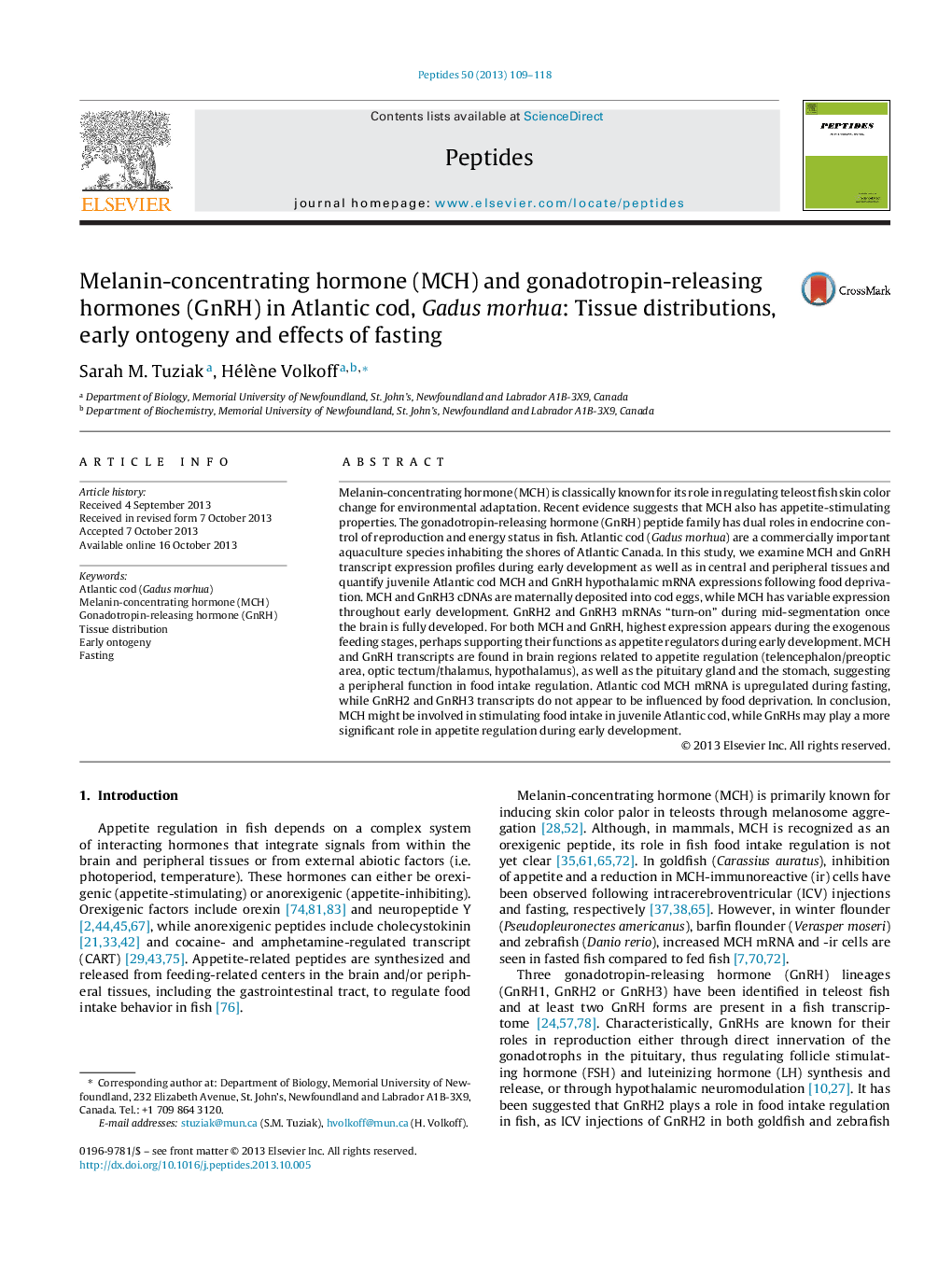| کد مقاله | کد نشریه | سال انتشار | مقاله انگلیسی | نسخه تمام متن |
|---|---|---|---|---|
| 2006149 | 1541729 | 2013 | 10 صفحه PDF | دانلود رایگان |

• MCH and GnRH3 are maternally deposited in Atlantic cod eggs.
• MCH and GnRH might be involved in early food intake regulation.
• All peptides are expressed in brain feeding centers, MCH is present in the GI tract.
• MCH and GnRH might be involved in appetite control in juvenile cod.
• GnRHs might have a more prominent role in reproduction than in feeding in cod.
Melanin-concentrating hormone (MCH) is classically known for its role in regulating teleost fish skin color change for environmental adaptation. Recent evidence suggests that MCH also has appetite-stimulating properties. The gonadotropin-releasing hormone (GnRH) peptide family has dual roles in endocrine control of reproduction and energy status in fish. Atlantic cod (Gadus morhua) are a commercially important aquaculture species inhabiting the shores of Atlantic Canada. In this study, we examine MCH and GnRH transcript expression profiles during early development as well as in central and peripheral tissues and quantify juvenile Atlantic cod MCH and GnRH hypothalamic mRNA expressions following food deprivation. MCH and GnRH3 cDNAs are maternally deposited into cod eggs, while MCH has variable expression throughout early development. GnRH2 and GnRH3 mRNAs “turn-on” during mid-segmentation once the brain is fully developed. For both MCH and GnRH, highest expression appears during the exogenous feeding stages, perhaps supporting their functions as appetite regulators during early development. MCH and GnRH transcripts are found in brain regions related to appetite regulation (telencephalon/preoptic area, optic tectum/thalamus, hypothalamus), as well as the pituitary gland and the stomach, suggesting a peripheral function in food intake regulation. Atlantic cod MCH mRNA is upregulated during fasting, while GnRH2 and GnRH3 transcripts do not appear to be influenced by food deprivation. In conclusion, MCH might be involved in stimulating food intake in juvenile Atlantic cod, while GnRHs may play a more significant role in appetite regulation during early development.
Journal: Peptides - Volume 50, December 2013, Pages 109–118